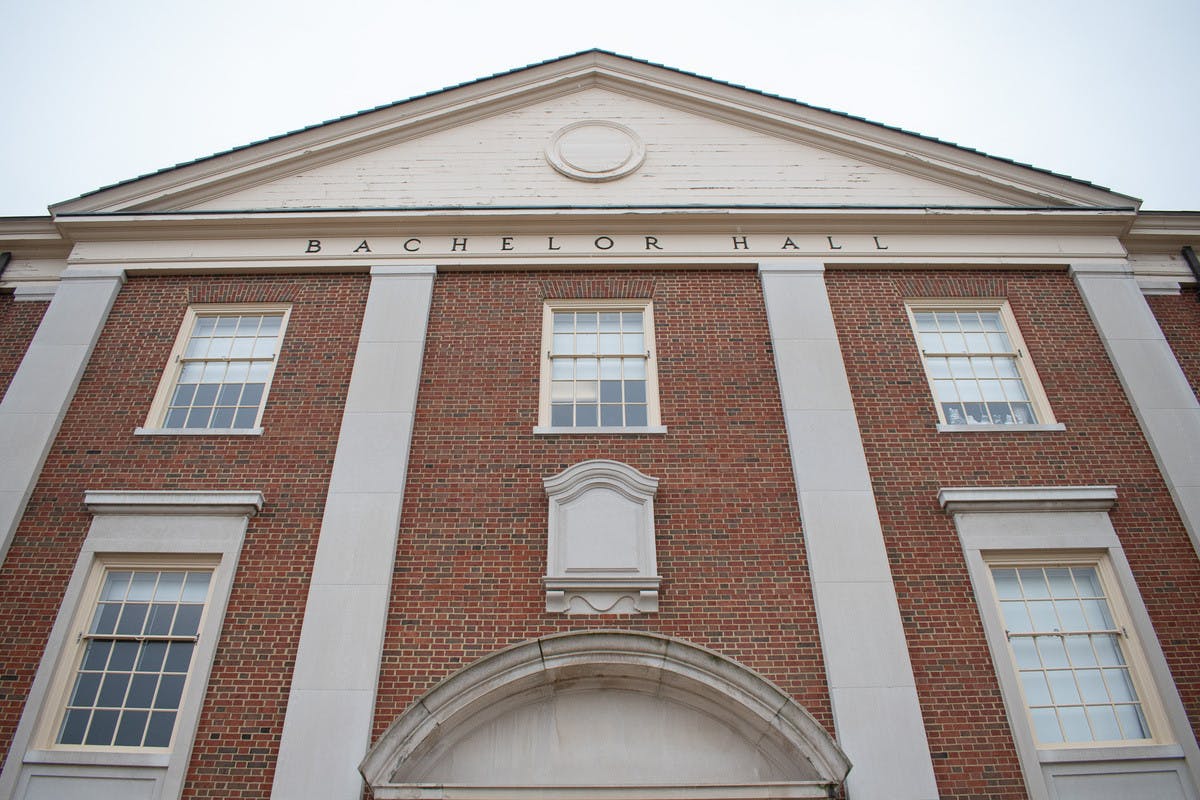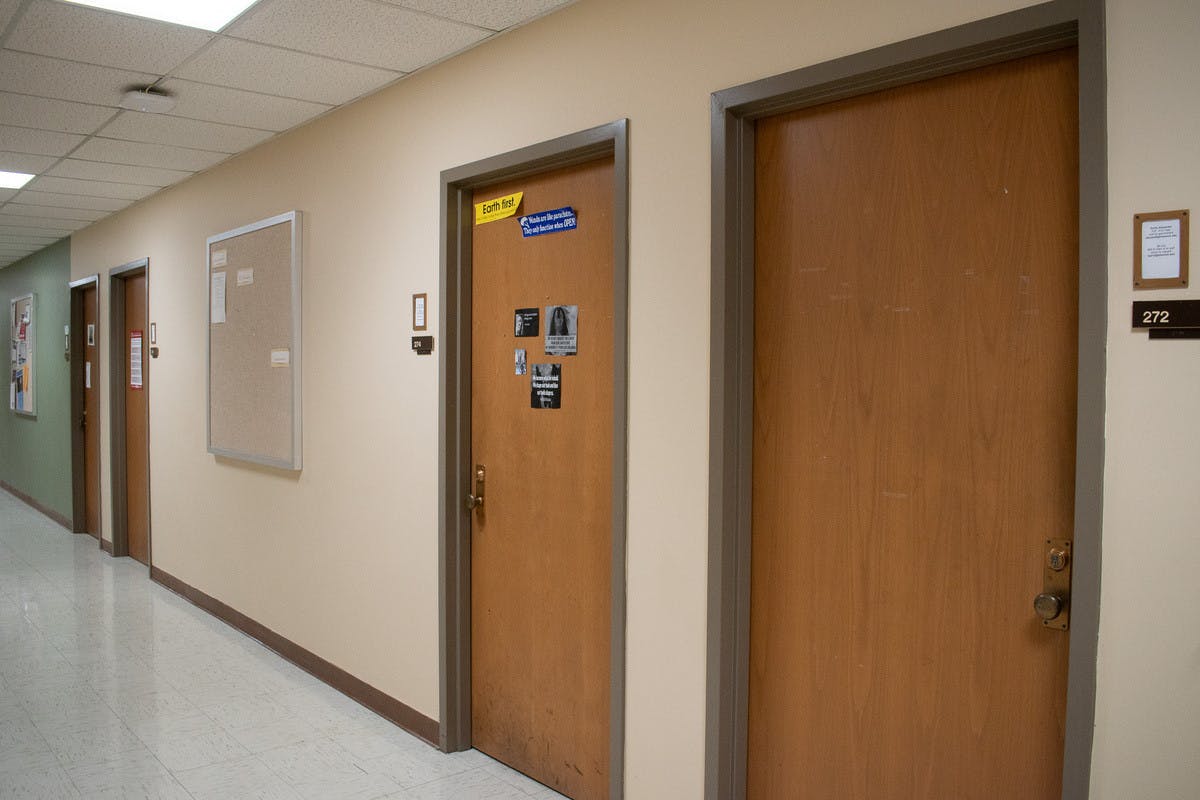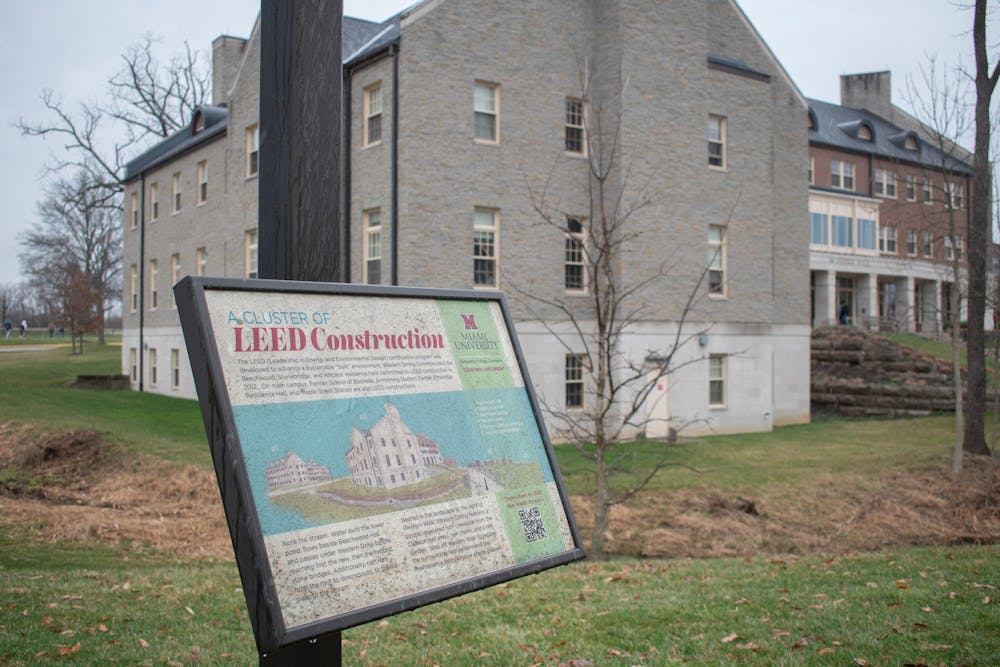After being vacated for renovations, buildings such as Pearson and Stanton halls on Miami University’s campus came back a little greener, now boasting a LEED certification.
LEED stands for Leadership in Energy and Environmental Design, and the designation aims to provide both framework and certification for green buildings.
The framework promotes eco-friendly features such as lower emissions and better health through improved air quality. Buildings are certified through a point-based system and can rank as certified, silver, gold or platinum status.
Miami’s campus is home to 32 gold and silver status buildings, amounting to 31% of total building square footage. This number will soon increase.
At the end of the spring semester, Bachelor Hall will undergo renovations. According to Robert Bell, director of planning, architecture and engineering, the university hopes to bring Bachelor to LEED silver status. Another renovation goal is to create better community spaces for humanities majors.

Bachelor Hall is the next building to be renovated with LEED certification in mind.
Jen Sammons, a visiting assistant professor in the English department, will temporarily move her office from Bachelor to Harrison Hall during these renovations. Temporarily moving will be an adjustment for Sammons, but she’s optimistic about Bachelor’s future.
“I do look forward to coming back and seeing the new designs that promote both sustainability and collegiality,” Sammons said.
One aspect Sammons would like to see in the Bachelor renovation is the addition of water bottle refilling stations. She believes this would be both eco-friendly and practical for people. This is a major goal of LEED building projects.

A professor in Bachelor Hall expresses their support for environmental causes.
Olivia Nixon, a first-year kinesiology major currently living in Stanton Hall, has experienced the implementation of these goals first-hand. After its renovations in 2020, Stanton achieved silver LEED status. In Nixon’s experience, the quality of her living environment has been higher than that of her peers in other halls.
“I’m definitely very lucky to live here,” Nixon said.
Enjoy what you're reading?
Signup for our newsletter
She feels good about Stanton’s facilities and her health living there. Bell said Miami LEED buildings have earned points on health and indoor air quality by having highly rated filtration systems, more fresh air and less stagnant air.
“[My roommate] and I do not have an air purifier, and neither of us have really gotten sick from it at all,” Nixon said.
Bell said renovated or newly built residence halls usually become LEED-certified.
Cutting down on carbon emissions and water usage are also important goals for LEED-certified buildings. Bell said that Miami achieves this by using regionally sourced or recycled materials, moving away from steam-powered energy, using low-flow plumbing fixtures — which reduce water use — and always aiming for energy efficiency. Bell and his department also improve the energy efficiency of buildings by replacing old, leaky windows with new ones that better retain heat.
Miami’s work to make buildings sustainable is not limited to the LEED framework. The university has also submitted unique ideas to earn LEED points, such as using cleaners with fewer chemicals that harm environmental and human health.
“If there’s a reason why we can’t achieve LEED,” Bell said, “we still do what we can to incorporate all the sustainability aspects that we’re able to.”




